Authentic Kalighat Painting of a Man in Red Hat and Jewelry – 1 Pcs
₹2,000.00
The Kalighat Painting of a Man in Red Hat and Jewelry is a captivating example of Bengal’s 19th-century artistic renaissance—a vivid portrayal that merges cultural pride, individuality, and social satire. Emerging from the bustling lanes near the Kalighat Kali Temple in Kolkata, this style of painting is celebrated for its fluid lines, bold colors, and emotional storytelling. The depiction of a man adorned in a red hat and jewelry reflects not just the aesthetic grace of Bengal’s Kalighat school but also its deep commentary on identity, aspiration, and changing social values in colonial India.
| Frame status | Unframed, shipped by roll |
|---|---|
| Painting Medium | Natural Color on paper |
| Shipping | 1-3 Business days after placing the order |
| Artist | |
| Dimensions | 7 * 11 in |
The Kalighat Painting of a Man in Red Hat and Jewelry is a captivating example of Bengal’s 19th-century artistic renaissance—a vivid portrayal that merges cultural pride, individuality, and social satire. Emerging from the bustling lanes near the Kalighat Kali Temple in Kolkata, this style of painting is celebrated for its fluid lines, bold colors, and emotional storytelling. The depiction of a man adorned in a red hat and jewelry reflects not just the aesthetic grace of Bengal’s Kalighat school but also its deep commentary on identity, aspiration, and changing social values in colonial India.
Origins of the Kalighat Painting Tradition
The Kalighat style originated when traditional patuas—itinerant scroll painters from rural Bengal—migrated to Kolkata in the early 19th century. Seeking new audiences, they began painting on paper instead of cloth scrolls, using natural pigments and minimalistic techniques that emphasized expression over ornamentation. The Kalighat Painting of a Man in Red Hat and Jewelry arises from this urban context, representing the meeting point of folk narrative and metropolitan sophistication. What began as temple souvenirs soon evolved into an influential art movement that chronicled the lives, fashions, and hypocrisies of a society in transition.
Depiction and Symbolism of the Man in Red Hat and Jewelry
The Kalighat Painting of a Man in Red Hat and Jewelry portrays a figure dressed in traditional Bengali attire yet accessorized with striking jewelry and a flamboyant red hat. This combination immediately attracts attention—symbolizing both confidence and vanity, modesty and indulgence. The red hat, in particular, signifies power, status, and masculine pride, while the jewelry reflects aspiration and material success. The artist uses this imagery to comment on how social ambition and Western influence were reshaping Bengali society during the colonial era. This figure may represent the Babu archetype—an urban gentleman known for his refined taste, wealth, and sometimes exaggerated self-image.
Artistic Technique and Visual Composition
What defines Kalighat paintings, including the Kalighat Painting of a Man in Red Hat and Jewelry, is their minimal yet expressive style. The artist employs fluid brushstrokes, strong outlines, and restrained use of color to emphasize form and emotion. The background is deliberately left blank, ensuring the subject commands full attention. The subtle shading adds volume to the figure, while the bold red hat acts as a focal point that draws the eye instantly. Colors like red, yellow, green, and black are prepared from natural sources—ochre stones, plant extracts, and lamp soot—creating a harmony between earthiness and elegance.
The Cultural Commentary of Kalighat Art
The Kalighat Painting of a Man in Red Hat and Jewelry is not merely a portrait—it’s a reflection of Bengal’s social commentary through art. The Kalighat artists often depicted contemporary life with humor, irony, and critique. By portraying men in lavish attire and jewelry, they subtly highlighted the growing preoccupation with appearance and class status among the emerging middle class. The man’s composed expression and embellished look can be read both as a symbol of urban sophistication and as a playful satire on vanity. Kalighat art thus became one of the earliest visual languages of social critique in India—observing not just mythological grandeur but the follies of everyday life.
The Fusion of Tradition and Modernity
The Kalighat Painting of a Man in Red Hat and Jewelry beautifully captures the fusion of traditional and modern identities in colonial Bengal. While the red hat might echo Western influence—resembling the fashion of colonial officials—the jewelry and posture remain deeply rooted in Indian aesthetics. This duality mirrors the Bengali Bhadralok (gentleman) of the 19th century—educated, wealthy, and yet navigating between two worlds. The artist’s depiction reflects how cultural boundaries blurred during this period, with Indian sensibilities absorbing modernity while retaining spiritual pride.
Aesthetic and Emotional Appeal
Despite its simplicity, the Kalighat Painting of a Man in Red Hat and Jewelry exudes remarkable emotional depth. The artist’s mastery lies in transforming a few brushstrokes into a complete narrative. The man’s gaze, posture, and accessories all convey a sense of personality—perhaps of ambition, charm, or introspection. The smooth lines and rhythmic brush movement impart a sense of motion, almost as if the figure could step out of the frame. The painting becomes a dialogue between restraint and expression, silence and attitude.
Historical Significance and Global Recognition
Kalighat paintings mark a turning point in Indian art history—they were among the first to depict everyday people rather than deities or mythological scenes. The Kalighat Painting of a Man in Red Hat and Jewelry exemplifies this shift toward realism and social reflection. Over time, these paintings gained recognition not only in India but also in European collections, admired for their proto-modernist style and minimal aesthetic. Today, major museums such as the Victoria and Albert Museum in London and the Indian Museum in Kolkata preserve these works as vital cultural artifacts of 19th-century Bengal.
Contemporary Relevance and Inspiration
The appeal of the Kalighat Painting of a Man in Red Hat and Jewelry endures even today. Its clean design, expressive form, and layered symbolism continue to inspire contemporary artists, fashion designers, and illustrators. The vibrant palette and stylized human forms are often reinterpreted in textiles, prints, and digital media. This enduring influence underscores how folk art, when rooted in truth and observation, transcends time and medium.
Why the Kalighat Painting of a Man in Red Hat and Jewelry is Timeless
The charm of this painting lies in its layered storytelling. It celebrates individuality, critiques vanity, and preserves a moment in history when art became the mirror of modern India. The man in the red hat and jewelry is not just a character—he is an emblem of transformation, embodying the aspirations and contradictions of his era.
Explore more handcrafted artworks in our Pattachitra Collection or follow The Bengal Craft on Instagram to see new arrivals and artisan stories.
Check out our other products- Pattachitra
Be the first to review “Authentic Kalighat Painting of a Man in Red Hat and Jewelry – 1 Pcs” Cancel reply
Related products
Pattachitra
Pattachitra
Pattachitra
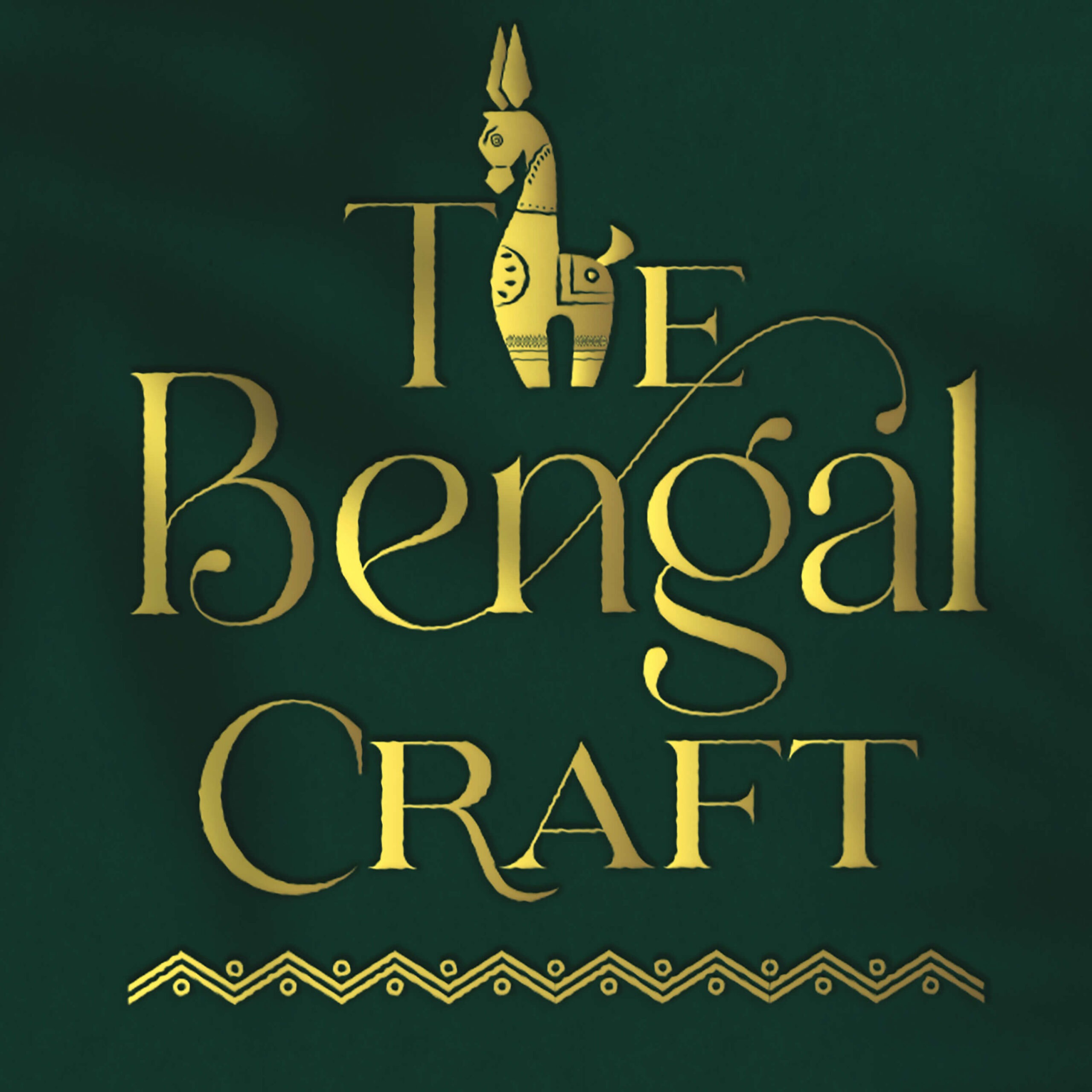

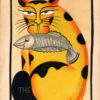

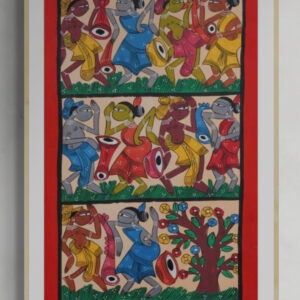
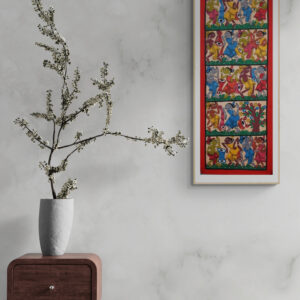
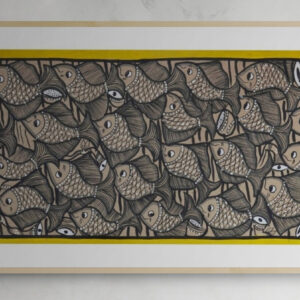
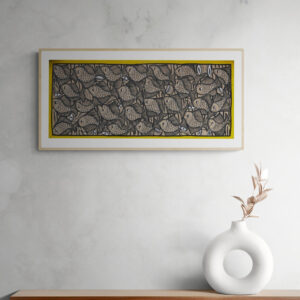
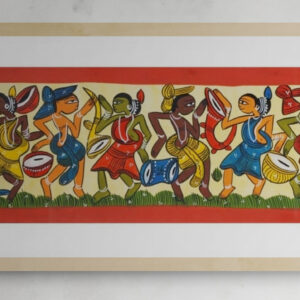
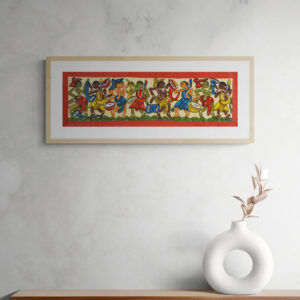

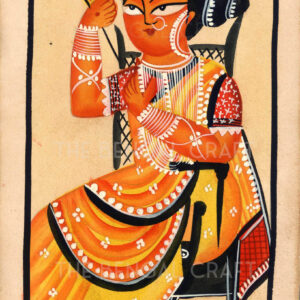
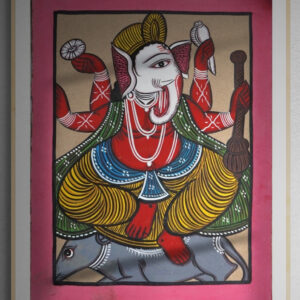
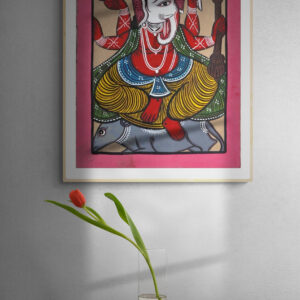
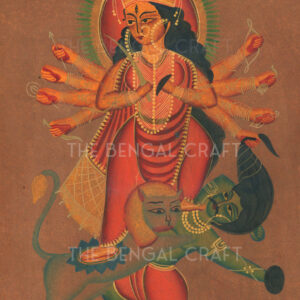
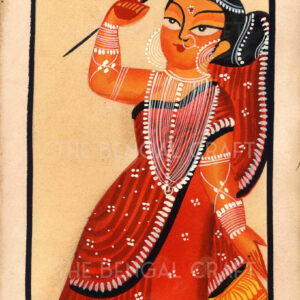
Reviews
There are no reviews yet.